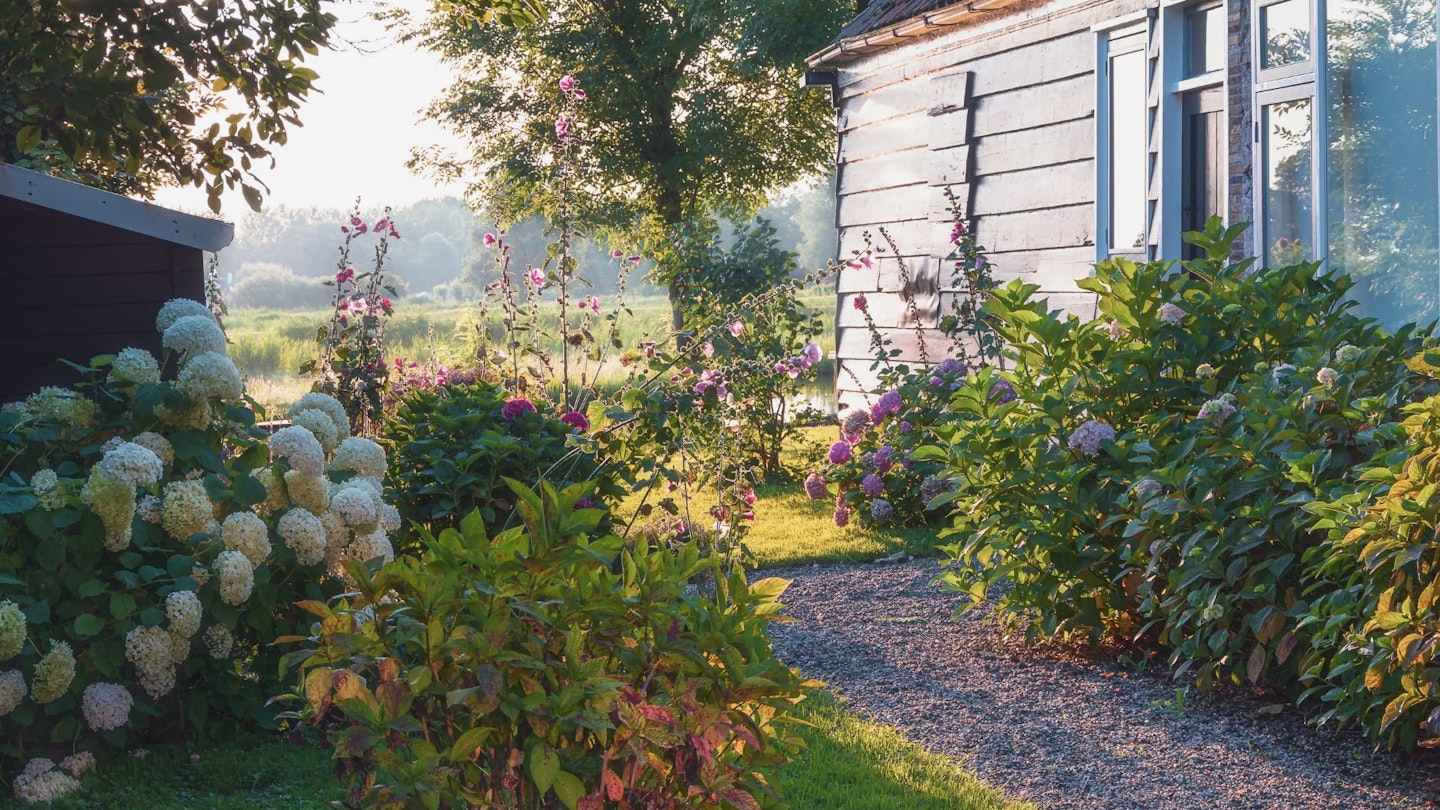While a north-facing garden may not have all the merits of a southern-facing sun-soaked garden, it has plenty of its own benefits. There are many ways to overcome the setbacks people with north-facing gardens face. Those with north-facing gardens will know that this usually means that your house blocks the sun from your garden, and while many see this as a negative, there are also plenty of upsides. Here are some tips and tricks you need to know in order to transform your north-facing garden.
Lighten up
Even though they do get sunlight later in the day, north-facing gardens are darker than south-facing lawns. One way to brighten up your space is to invest in lighter wood furniture. Kris Manalo, design lead at Atkin and Thyme says that “choosing paler coloured furniture will visually lift a north-facing garden. It stands out against the natural greens and browns and will make your seating area feel light and inviting.” If you don’t have the budget to buy brand new furniture, consider painting the chairs and tables you already own.

Switching positions
Another negative component is that you've got less space to play with in a north-facing garden. You obviously want to make the most of your sunlight, so positioning is a vital element of a smaller or darker garden. Situate your seating plan at the bottom of your garden to get the most of the light. This way when you come home from work, you've got the perfect place to sit to soak up the last of the day's rays. Alternatively, you can consider lightweight or moveable furniture so you can adjust your position to suit the sun level.
Go low
Another way to minimise shadows and make the most of the sunlight is by focusing on lower plants rather than tall trees. Try planting bushes and flowers around the circumference of your space. By embracing this lower level of your garden you will minimise shadows and give you more room to grow- literally.
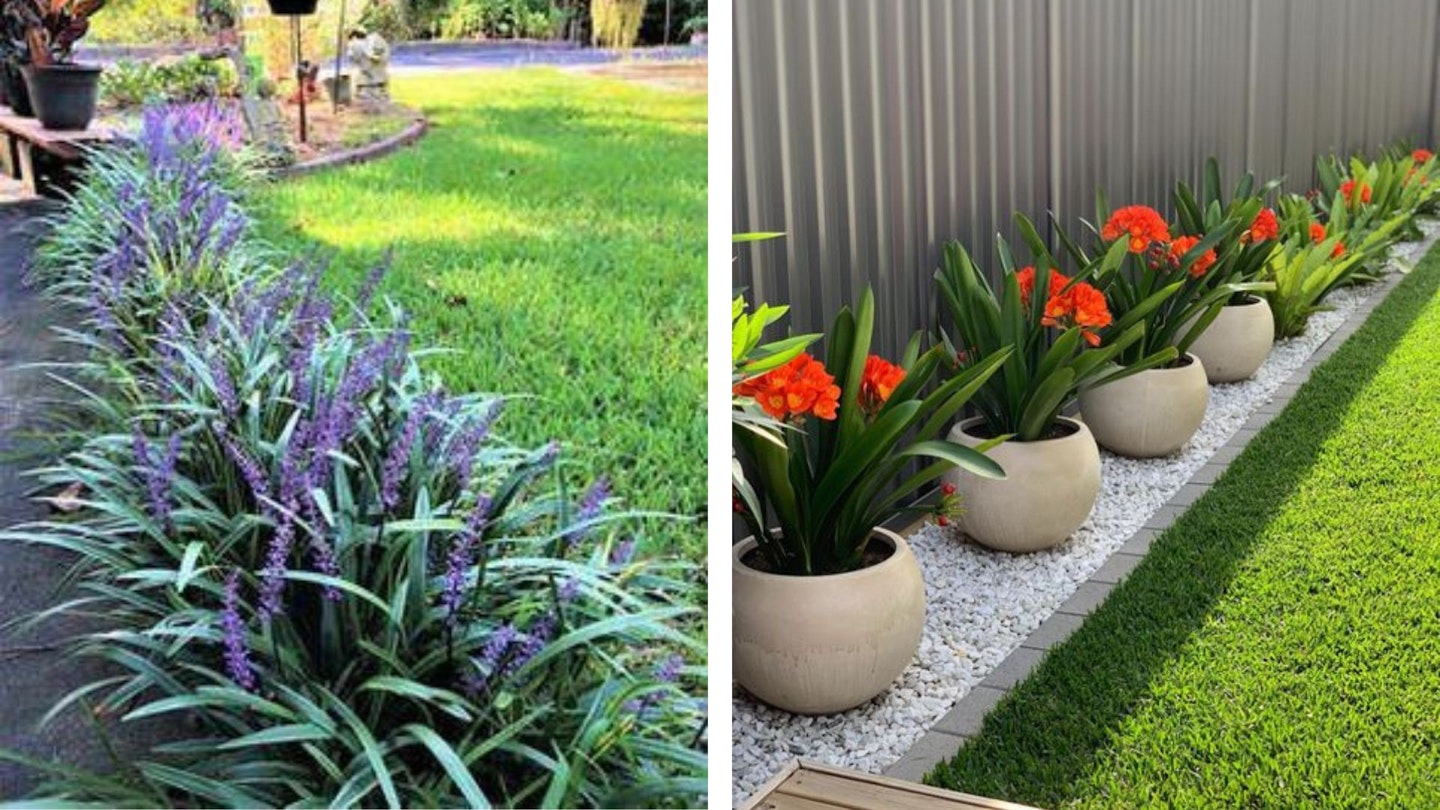
Choose shade loving evergreens- many plants thrive in the shadows, so utilise your unique advantage. Ferns work particularly well in darker north-facing gardens, plus they add some of that much needed texture. Some herbs even grow better in the shade! Garden designer Jacquie Felix-Mitchell suggests that you look for plants ‘which sing in the shade’.
She writes, “The gorgeous and rather stylish petiolaris is an evergreen climbing hydrangea… and you can easily grow it up a wall.”
Jaqueline, who specialises in oasis-style gardens, also recommends clematis armandii, “a classy plant with evergreen pointed leaves. First among equals, she'll romp her way up a trellis, pergola or wall, and give you small scented white flowers in late winter, or early spring.’
Chris McIlroy, group e-commerce and digital manager at The Grass People, says, “‘While most flowers require a lot of sunlight, many wildflowers grow very well in the shade.” Ideal Homes says that sweet cicely, angelica, sweet woodruff and red campion are all wildflower breeds that thrive in the shade.
Garden designer Tom Massey says, “Shade loving plants like lush green ferns, Japanese forest grass (Hakonechloa macra) and tree ferns (Dicksonia antarctica) are a great solution for shady spaces.”
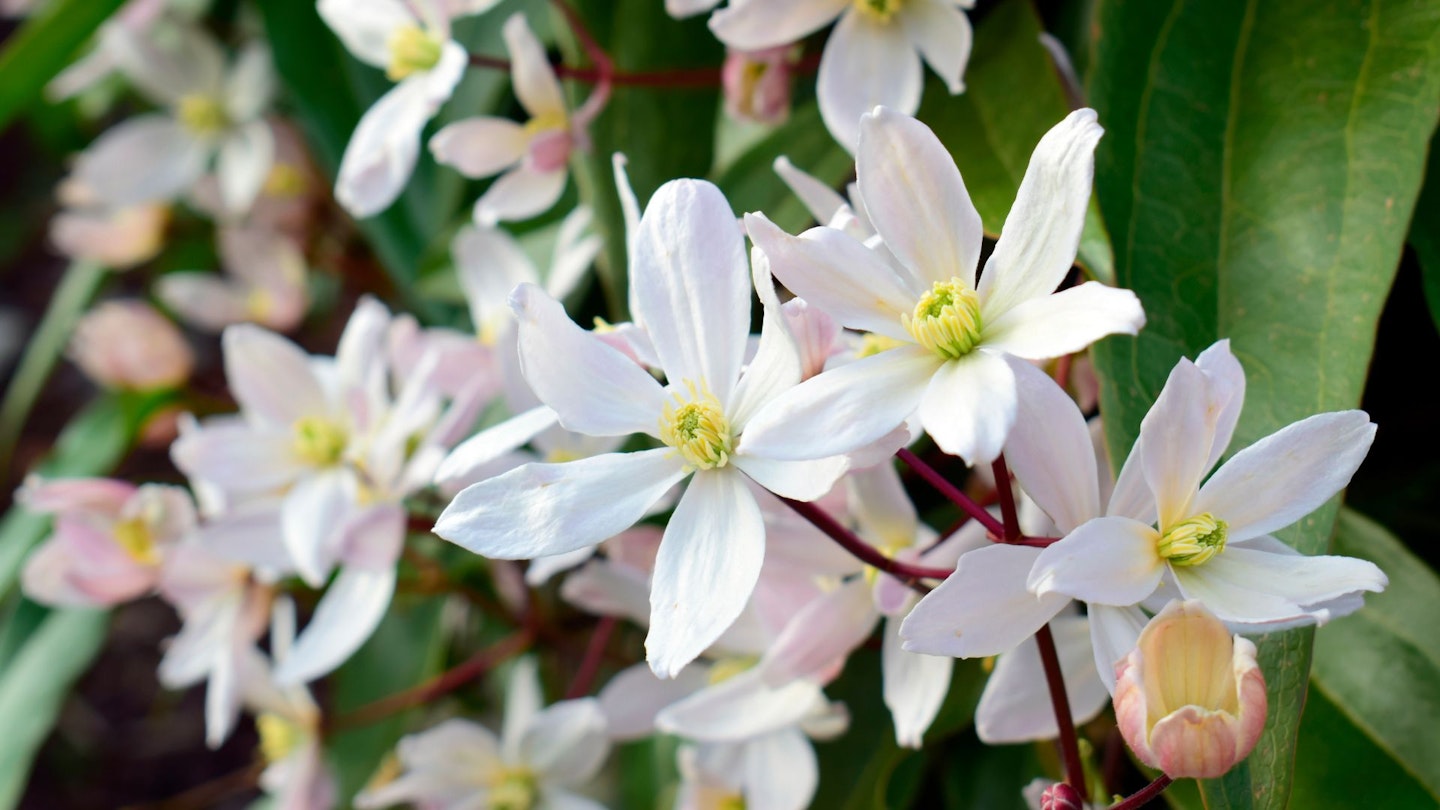
Stream on
If you still want to create the illusion of light, and you have the room, consider including a garden stream or pond in your garden design. The water will reflect the sunlight and bounce light around the space, creating the impression of a bright garden. Ponds will work particularly well in darker corners of the garden where you find yourself stuck on ideas. They're also a great alternative who want to create a garden but don't have a green thumb.
New textures
Creating depth can also deceive the eye into seeing more light. Award-winning garden designer Matthew Childs recommends selecting plants with lots of textural foliage for north-facing gardens. He says, “hosta, ferns and epimediums are my go-to plants, with glossy leaf plants like Fatsia japonica reflecting light into the space.”
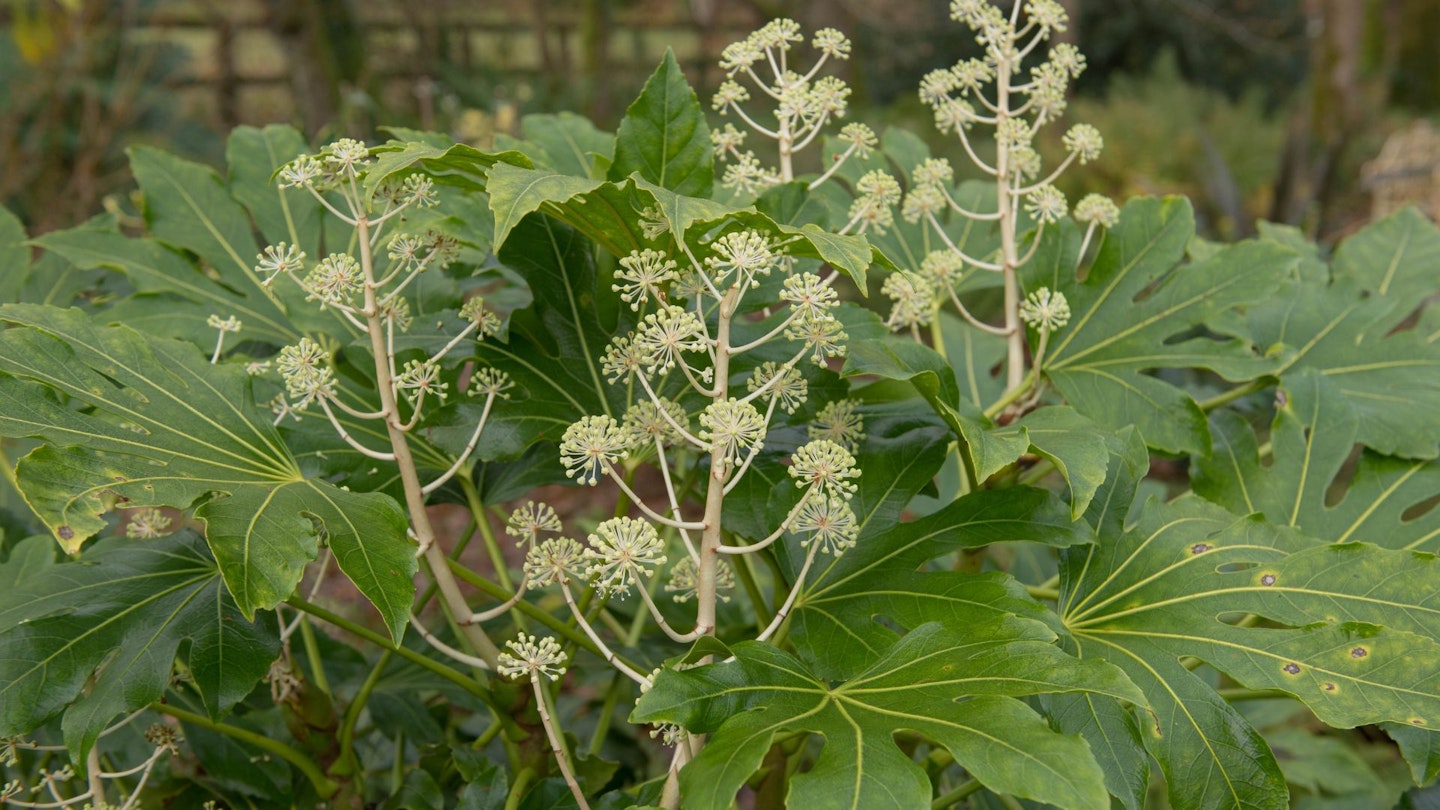
This doesn't stop with foliage- pay special attention to the textures in your garden backdrop- especially of the material of the ground. Harriet Farlam, creative director of Farlam & Chandler, says, “Choose materials that will weather well in the long term, such as dark bricks, and don’t be afraid to let nature do its thing… Moss in between cracks of paving will only enhance its character.” Patterned brick backdrops can add that further detailing to add to the tapestry of materials in your garden.
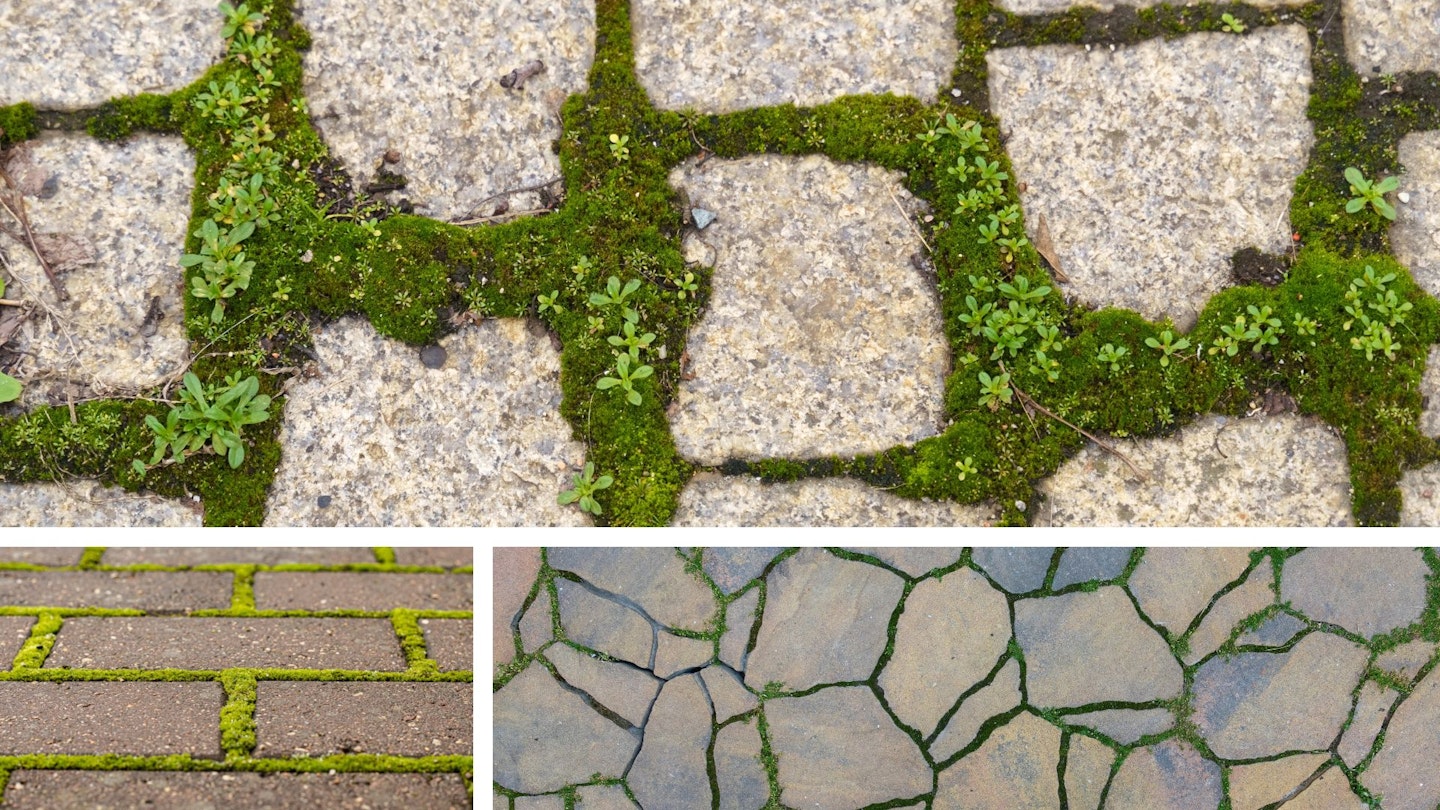
Bright idea
It may sound obvious, but planting white plants and flowers will automatically brighten up any space, even those that are shaded for the majority of the day. John Wyer, CEO and lead designer at Bowles & Wyer, says, “white-flowered plants are particularly suited to shady spaces and look good against a foil of dark foliage.” By contrasting these white colours with textured foliage, you can produce depth and a striking effect. Even using bright coloured pots for your plants can bring out the light in your garden.
Painting a fence or wall a different colour can also transform a space. If you don’t have the gardening gene but still want some brightness, choose a lighter shade to utilise the space. If you aren’t able to paint your fences or furniture, try adding some colourful throws and outdoor cushions for that splash of colour. Sometimes even the smallest pop of colour can make a huge difference and tie the darker corners in with the brighter spots.
Embrace the dark side
A north-facing garden is not all doom and gloom, there are plenty of garden elements that will only work in a shadier garden. Consider investing in an outdoor kitchen- maybe a barbecue or a pizza oven. In a sheltered garden, there’s no sun in your eyes as you’re trying to flip burgers! Similarly, a darker garden is perfect for a play area, this will ensure that kids can play outside and still remain cool. In the summer months, this can be a godsend for parents who want their little ones to be protected from the sun.

Bring on the heat
Another way to enhance the cosiness of a shaded garden is a fire pit. If you’re working with a small space, a fire pit can help generate a snug atmosphere. Plus, you can combine heat and light by getting an outdoor heater. This will also allow you to always control the temperature of your garden in those colder seasons.
A dimmer garden is a great opportunity to get smart with your outdoor lighting, in a shadier garden you will have much more control over what spaces get the light. Attract the eye by create a haven around your outdoor seating. Try creating a lighted pathway of outdoor candles or warm fairy lights, this will produce a magical cosy effect.
FAQs
Will a north-facing garden get any sun?
North-facing gardens usually get around 3-4 hours of direct sunshine every day, usually in the late afternoon or evening.
What can I not grow in a north-facing garden?
Due to the lack of sunlight, it is unlikely that you'll successfully be able to grow lavender, petunias, and sunflowers. However, as mentioned above, there are many ferns and flowers that will grow. Sweet cicely, angelica, sweet woodruff, red campion and honeysuckle will all thrive in a shaded garden.
What is the best climber for a north-facing house?
Adding a climbing plant to a garden or house wall is an amazing opportunity to introduce some extra greenery. Chocolate vine (akebia quinata), clematis armandii, clematis montana, climbing hydrangea, ivy plants, several varieties of lonicera and virginia creeper will all work well for a north-facing space.
Sarah O’Byrne has been an editorial assistant at heat, Closer and Yours since May 2023. She has a BA in English with Film and an MA in Literature and Culture - both from University College Dublin.
To enjoy more regular stories just like this, become a Yours subscriber and become part of our fun and friendly community of like-minded readers.
